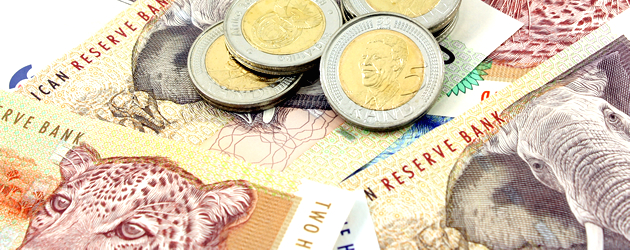
The South African Rand has retreated from last week’s highs and looks set to resume a downward trajectory as investors speculate that the nation’s current account deficit will widen more than previously expected when the South African Reserve Bank releases its second quarter bulletin on Tuesday.
Over the weekend the Rand was trading close to a three-month high against the US Dollar and was up against the Pound and other major currencies. The Rand’s rise came after some gold miners ended their strike action and as US jobs data weighed upon the US currency and dented the possibility of the Federal Reserve tapering its monetary stimulus programme that has injected billions of Dollars into emerging markets. The Reserve gathers to decide what it will do next week.
“The bulk of the movement occurred after the release of the non-farm payrolls, which fell well short of expectations and all the indicators led to the strengthening across the bond curve,” said Richard Farber, a bond trader with World Wide Capital Securities.
Despite the gold miners returning to work the Rand remains highly vulnerable to the ever-present threat of strikes and the unstable outlook for the South African economy, which continues to be harmed by labour unrest. Domestic events are likely to cap any further gains this week, with petrol station and car dealership workers planning to stay away from work on Monday as the workers in the auto manufacturing and gold mining sectors end their own strikes.
Current South African (ZAR) Exchange Rates:
The US Dollar/South African Rand Exchange Rate is currently in the region of: 9.9715 <
The Pound Sterling/South African Rand Exchange Rate is currently in the region of: 15.6226 <
The Euro/South African Rand Exchange Rate is currently in the region of: 13.1494 <
The New Zealand Dollar/South African Rand Exchange Rate is currently in the region of 7.9839 <
The Canadian Dollar/South African Rand Exchange Rate is currently trading in the region of 9.6037 <
(Correct as of 11:25 am GMT)

Comments are closed.